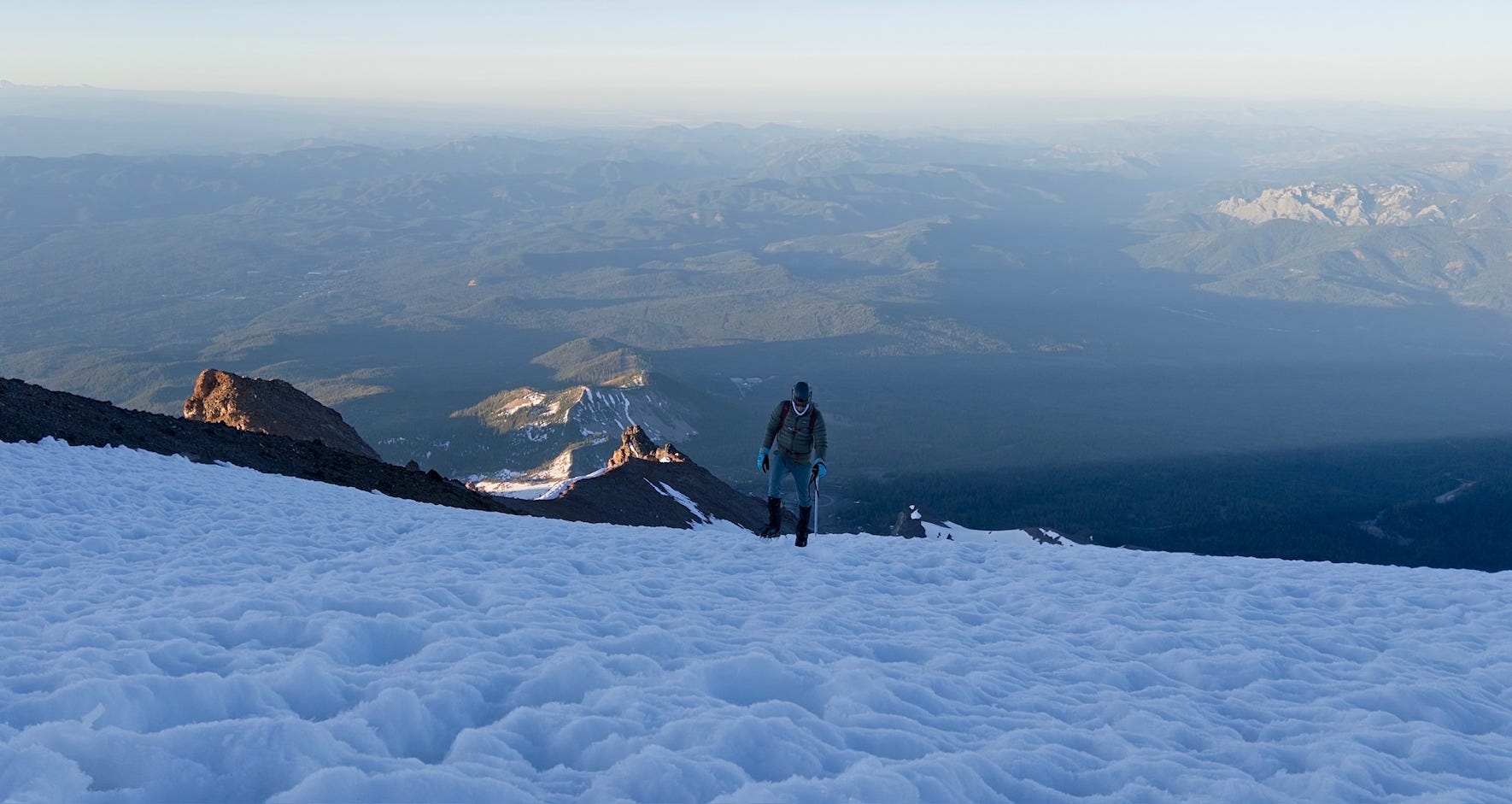Above: our intrepid hero traverses the upper slopes of Mt. Shasta. Two years ago I attempted the climb and nearly met an untimely end on the way down. Last summer even the idea of picking up an ice axe again terrified me. But one day this June I suddenly realized that it was time to go back. That weekend I packed my Subaru with two friends, gear that cost us a collective arm and a leg, and enough protein bars to give all of us rapid-onset constipation. After a short hike to 10k feet and two hours of pretending to sleep, we strapped on crampons and climbed into the night.
The twenty minutes we spent at the summit disappeared into a haze of sleep deprivation, altitude sickness, physical exhaustion, and protein bars. The descent was precarious in places. The friction caused by a thousand-foot glissade1 burned through the elbow of my brand new Patagonia quarter-zip and some of my own elbow as well. Nonetheless I am glad to have resolved some unfinished business with the mountain.
I’ve read many books about mountaineering expeditions and disasters: the first ascent of Annapurna, the ‘86 disaster on K2, the ‘96 disaster on Everest, ‘08 on K2, Joe Simpson on Siula Grande, and now I’ve climbed a small mountain myself. Over the last six months one of my friends has been patiently teaching me the details of outdoor climbing: knots, protection, rappelling. One reason I’m drawn to climbing is that it cultivates a different perspective on safety. Growing up in our society I came to believe that trusting another person with your life is a momentous and weighty decision, and that voluntarily taking on risk is unthinkable. But it never feels momentous when my friend and I step over the edge into a simul-rappel2. The trust is immediate, unspoken, and easy.
Risk and danger have been part of life since the beginning, and in becoming averse to danger, we lose access to the essential confidence of having survived. The certainty that we will respond bravely to the next challenge is what permits us to relax in the interim. Life is not life without risk.
Glissading is the technique of sliding on your ass down a snow slope while using an ice axe to maintain control. On a forty-degree slope it becomes a little dicey. Rather than proceeding at a constant, safe speed, I would repeatedly accelerate to the point of losing control and then have to self-arrest with the axe. The late morning snow still contained solid chunks of ice that left large bruises on my thighs, but at least the skin on my legs was so thoroughly numbed by the cold that I couldn’t feel the pain until later.
Simul-rappelling involves two people descending either side of one rope hanging at its center from an anchor. It’s faster than rappelling individually, but carries the risk that if one person falls, so does the other.



You should check out the short story "Mountain" by Liu Cixin: https://www.apexbookcompany.com/a/blog/apex-magazine/post/mountain?srsltid=AfmBOoqqHf4uW6iu4JpAeGC6IYWJwOVZvGLJDLtr3Vf8EUPcp-32XLQg